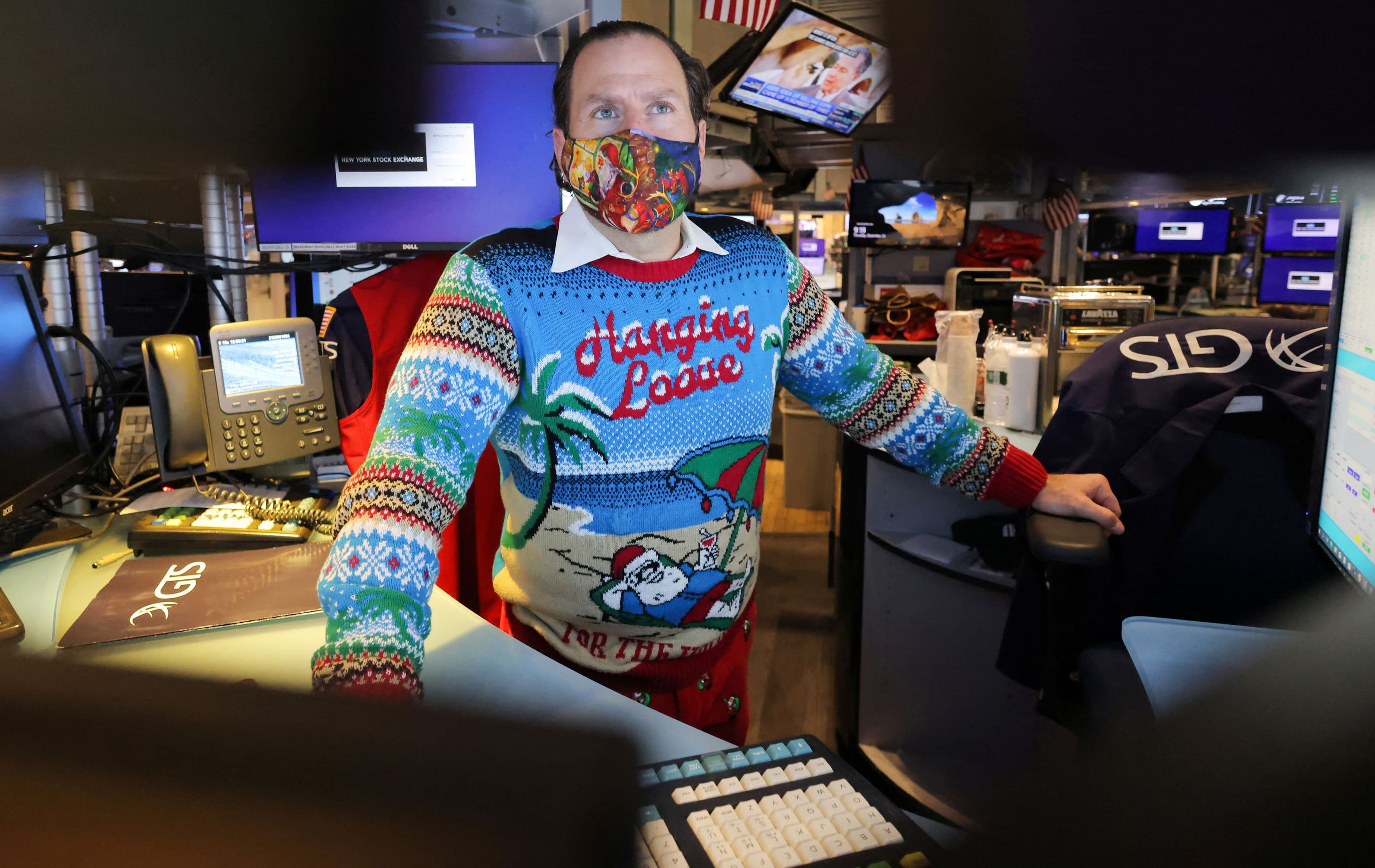S&P 500 closes at a record following 3-day rebound from omicron sell-off

Trader Michael Pistillo Jr. wears a festive sweater on the trading floor on the last day of trading before Christmas at the New York Stock Exchange (NYSE) in Manhattan, New York City, U.S., December 23, 2021.
Andrew Kelly | Reuters
The major averages rose for a third day on Thursday as investors looked past earlier jitters about the spread of the omicron Covid variant.
The Dow Jones Industrial Average added 196.67 points, or 0.55%, to 35,950.56. The S&P 500 rose 0.62% to 4,725.79 and closed at a record. The 500-stock average sits less than 0.4% from its intraday record high. The Nasdaq Composite gained 0.85% to 15,653.37.
Loading chart…
Thursday’s gains were broad across the board, although on light volume. Bank shares were higher, along with tech stocks Microsoft and Nvidia.
“Much of the stock market’s rally this week is due to overdone fears last week and a palpable sigh of relief the selling finally stopped,” said Jim Paulsen, Leuthold Group’s chief investment strategist. “Once the market turned higher, dip-buyers not wanting to miss out on a Santa Rally have taken charge.”
Helping boost sentiment were new studies suggesting that omicron has a lower risk of hospitalization than other Covid variants.
The Food and Drug Administration granted emergency use authorization for Pfizer’s Covid pill, the first oral antiviral drug against the virus. The FDA also authorized Merck‘s antiviral pill for Covid-19 on Thursday.
All three averages are higher for the week. Since Monday, the Dow rose 1.6%, and the S&P 500 popped about 2.3%. The Nasdaq Composite rallied nearly 3.2% this week. U.S. markets are closed Friday for the Christmas holiday.
Reopening plays like airlines and cruise lines were some of the biggest winners this week during the comeback. Carnival Corp. rose nearly 16% since Monday. Hilton Worldwide rallied about 9.8% this week.
The market rebound, which began Tuesday, follows a three-day losing streak for the major averages spurred by fears about the speed of the spread of the latest Covid-19 variant. It was the worst decline for the S&P over a three-day period since September. For the Nasdaq, it was the worst three-day stretch since May.
Economic data out Thursday morning showed a strong economy with improving labor and spending trends, but inflation at uncomfortable levels.
Jobless claims for the week ended Dec.18 came in about as expected at 205,000. Durable goods for November rose 2.5%, compared to the 1.5% Dow Jones estimate. Personal income and spending showed increases for November.
But on the inflation side, the Federal Reserve’s closely watched core personal consumption expenditures index rose 0.6% in November from the month prior. Core PCE rose 4.7% year-over-year in November, higher than the 4.5% rate expected.
— CNBC’s Jesse Pound contributed reporting.




